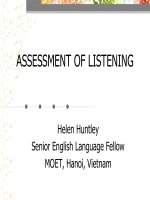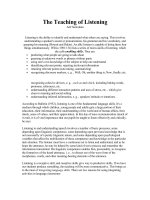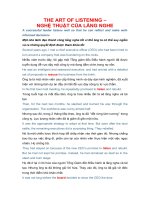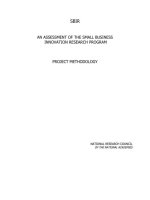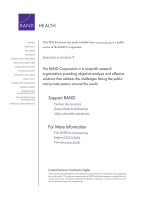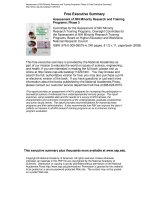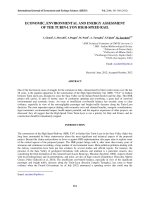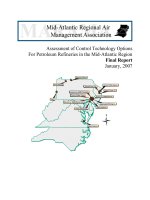ASSESSMENT OF LISTENING
Bạn đang xem bản rút gọn của tài liệu. Xem và tải ngay bản đầy đủ của tài liệu tại đây (97.44 KB, 15 trang )
ASSESSMENT OF LISTENING
Helen Huntley
Senior English Language Fellow
MOET, Hanoi, Vietnam
The Reading/Listening
Connection
•
How is the assessment of listening
different from the assessment of
reading??
•
How is it similar??
Micro-skills for Listening
•
discriminate among the distinctive sounds of English
•
retain chunks of language in short-term memory
•
recognize English stress patterns, rhythm, intonation
•
recognize reduced forms of words
•
distinguish word boundaries
•
interpret word order patterns
•
process speech at different rates of delivery
•
process speech containing pauses, errors, corrections
•
recognize grammatical word forms, patterns, rules
•
recognize cohesive devices
•
recognize meaning expressed through different
grammatical patterns
Macro-skills for Listening
•
recognize the communicative function of
utterances
•
identify main ideas from supporting details
•
make inferences using real-world knowledge
•
predict outcomes and infer connections
•
distinguish between literal and implied
meanings
•
use non-verbal clues to assist comprehension
•
use listening strategies (guessing vocabulary,
signaling comprehension etc.)
Listening Assessment Tips
•
Make sure students have enough contextualization to
understand the listening text
•
Provide a communicative purpose for the listening
•
Focus on assessing the listening skills, not spelling,
grammar etc.
•
Include both detail questions and meaning questions
•
Don’t expect full comprehension
•
Consider integrating skills in the types of questions:
discrimination of phonemes, paraphrase recognition, short
answers, cloze, dictation, information transfer tasks, note-taking
Test Content
Test specifications for Listening might include
the following:
•
Text types (narrative, descriptive etc.)
•
Speech types (dialogues, monologues)
•
Mode of listening: audio, video, reader
•
Varieties of English
•
Scripted or unscripted
•
Length of listening, number of exchanges in
dialogues
